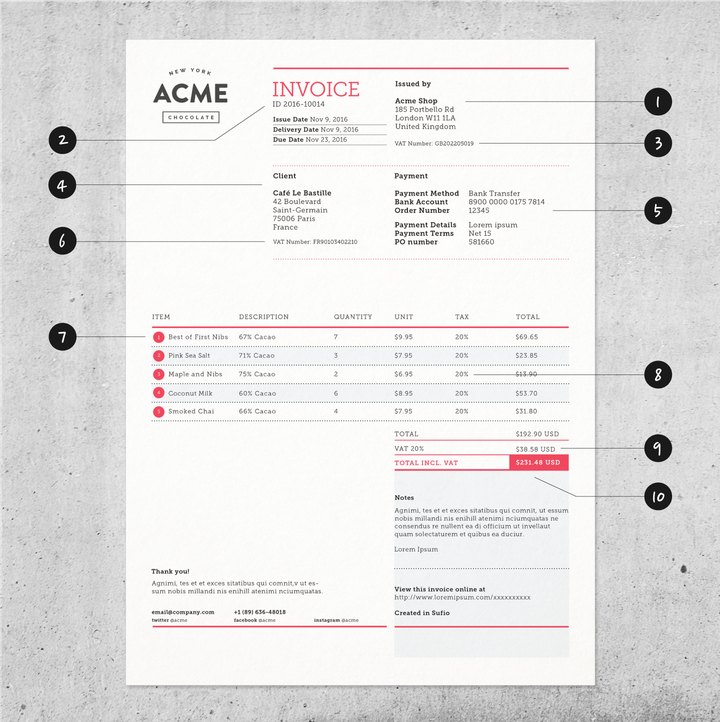An invoice template provides you with a design for a formal invoice to send to your clients to mark a sale. An invoice is different from a simple receipt in that it gives your clients, your accountant and your local tax office an itemised breakdown of the business exchange.
What Are the Requirements for an Invoice Template?
There’s not one universal type of invoice template. Every country has their own rules about what should appear on invoice templates, so they will be different from invoice templates in another country.
The invoice breakdown below outlines some general items, some of which are required and some optional.

The standard invoice template should include:
- Your business name and address.
- A unique invoice number.
- Your tax ID (VAT or GST number).
- Client’s name and billing address.
- Payment details and terms.
- Client’s tax ID (VAT or GST number).
- A list of items sold, including quantities, unit prices and totals.
- Tax rates per individual items.
- Full breakdown of tax rates and tax amounts charged.
- Total amounts exclusive and inclusive of tax.
Why Is the Design of Your Invoice Important?
An invoice serves as an important contact point with your customer.
A boring invoice template is a missed opportunity to build an impression of your brand. Every document you send out will either support or derail from your brand image.
The deciding factor is the design of the invoice template. Is the layout clean and legible? Do the colors and typography match your brand? Is it something more than just the usual invoice? If so, you’re on the right path towards making your invoice a part of your branding.
Professional invoices for online stores
Let Sufio automatically create and send beautiful invoices for every order in your store.